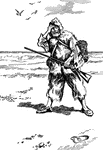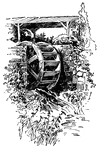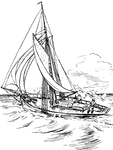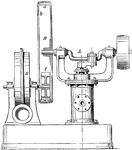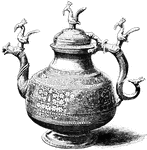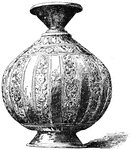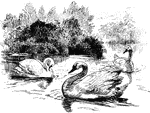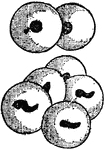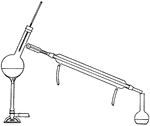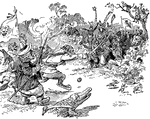
When the Animals Were at War
A scene from the story, When The Animals Were At War. The elephants poured water; the monkeys…
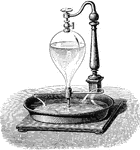
Tourniquet
Hydraulic tourniquet, also called Barker's mill. It consists of a vessel of water free to rotate about…

Hydrometer
Nicholson's Hydrometer, consists of a hollow cylinder of metal with conical ends, terminated above by…

Hydrometer
Nicholson's Hydrometer, consists of a hollow cylinder of metal with conical ends, terminated above by…

Tantalus, Sisyphus, and Ixion
"As he sang these tender strains, the very ghosts shed tears. Tantalus, in spite of his thirst, stopped…
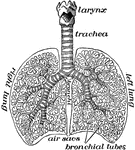
The lungs
"The lungs fill up most of the cavity of the chest. One lies on either side of the heart which is in…

Tap water filter
"A filter to strain out the germs at the house tap. Such a filter must be cleaned and boiled weekly."…

Leech
A class of suctorial worms found in bodies of water, marshes, and other moist places. There are many…

Lotus
A name derived from the lotus of Greek legend, and applied to various species of plants related to the…

Manatee
An animal native to the waters of South America, Australia, and West Africa. It is herbivorous, subsisting…
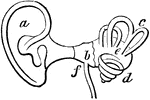
Ear
Interior of the ear. There is external to the head a wide-mouthed tube, or ear-trumpet (a), for catching…
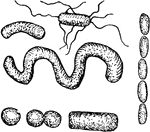
Bacteria
Harmless bacteria so numerous in drinking water that a person often takes a half-million into his stomach…

Well Water
How the well often becomes impure and carries disease. A well near a barnyard or cesspool is likely…

Nasturtium
A genus of aquatic herbs of the mustard famil, known generally as the water-cresses. The leaves in most…

Lotus Design
Very much resembles our pond lily with the exception that the color is of a brilliant purple on the…
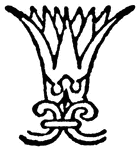
Lotus Design
Very much resembles our pond lily with the exception that the color is of a brilliant purple on the…

Lotus Design
Very much resembles our pond lily with the exception that the color is of a brilliant purple on the…

Lotus Design
Very much resembles our pond lily with the exception that the color is of a brilliant purple on the…

Lotus Design
Very much resembles our pond lily with the exception that the color is of a brilliant purple on the…
Greek Meander
A border design also known as the zigzag, the wave crest, or the water motif. It consists of a series…

Tree Design
Sometimes called the tree of life. Always associated with religious belief. It symbolizes Divine power…
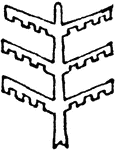
Tree Design
Sometimes called the tree of life. Always associated with religious belief. It symbolizes Divine power…
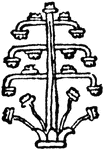
Tree Design
Sometimes called the tree of life. Always associated with religious belief. It symbolizes Divine power…
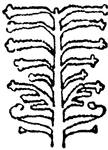
Tree Design
Sometimes called the tree of life. Always associated with religious belief. It symbolizes Divine power…

Felt Rubbing Pad
This is used to rub the gloss and roughness off of painted, enameled and varnished surfaces with pumice…
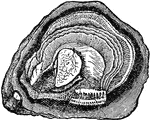
Oyster
An edible bivavle mollusk, closely allied to the mussels, and which forms an important article of commerce.…

Pelican
A genus of webfooted water birds remarkable for their broad bill with a pouch under it. The bill is…

Perch
A genus of fish including many species, and found widely distributed both in salt and fresh water. They…
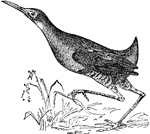
Rail
A genus of birds that includes about 150 species, whih are distributed throughout the world. They include…

Seal
The general name of certain genera of carnivorous mammals, havin feet adapted for swimming, and being…
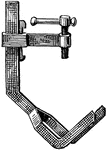
Crow
A device used for holding a gas or water main in position while it is tapped for a service pipe.

Snail
A gasteropodous mollusk, differing from the slug in having a large, spiral shell. The species are very…
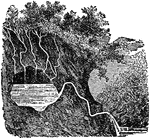
Spring
A flow of water from the interior of the earth, caused by the water resulting from rain or snow.
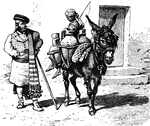
Water Carrier
A Spanish water carrier, which usually consisted of a donkey and pottery attached to it.

Amebas
An animal that lives in stagnant water. It is so small that it can only be seen with a microscope.
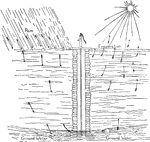
Water Circulation
This diagram shows waters transition from rain, to ground water, and back up to rain again.

Test-tube
This illustration shows a flame being held under cold water, turning the water in to a gas.

Composition by Weight
This illustration shows an arrangement by which the proportion by weight of hydrogen and oxygen in water…
Pasteur Filter
A tube of unglazed porcelain, closed at one end, through the pores of which the water is forced by its…

Oxygen Release
This illustration shows oxygen escaping leaves when they are placed in water and then in sunlight.
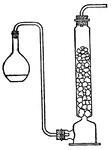
Quicklime
This illustration shows a tower filled with quicklime, being used to filter out gas from water vapor.
Solubility Test
This illustraion shows a "fountain" experiment. This experiment is used to determine specific elements…
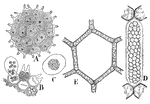
Green Algae
This illustration shows the colonial forms of unicellular green algae: A, Pediastrum, the plants of…
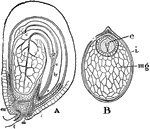
Dicotylendonous
This illustration shows the structure of dicotyledonous seeds: A, nearly mature seed of Lepidium. The…

Greenland Whale
This illustration shows the jaw of a Greenland Whale. The Greenland Whale uses this massive jaw to filter…

Whale Flipper
This illustration shows the flipper of a whale. The whales use their flippers to propel themselves through…
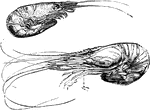
Shrimp
Small, swimming, decapod crustaceans classified in the infraorder Caridea, found widely around the world…
